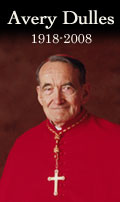Monday, March 29, 2004
Thoughts On Seeing The Passion
I saw The Passion of The Christ today. Enough has been blogged about it that I don't think I can add anything new to the discussion (see a roundup of previous reviews here). However, I'll jot down some post-viewing reflections for those interested:
Subject to the readings of the gospel accounts every Easter, the repitition of the liturgy every Sunday, I think it is entirely possible to become de-sensitized, to hear but not listen, to lose our grasp of what happened on that day on Calvary and the meaning it has -- or it should have -- on every conscious moment of our life as Christians. Kierkegaard touched on this ever-present danger in his journal, when he stressed the necessity of appropriating the truth in one's own life:
- What I really need is to be clear about what I am to do, not what I must know, except in the way knowledge must precede all action. It is a question of understanding my destiny, of seeing what the Deity really wants me to do; the thing is to find a truth which is true for me, to find the idea for which I am willing to live and die. And what use here would it be if I were to discover a so-called objective truth, or if I worked my way through the philosophers' systems and were able to call them all to account on request, point out inconsistencies in every single circle? . . . What use would it be to be able to propound the meaning of Christianity, to explain many separate facts, if it had no deeper meaning for myself and for my life? [ August 1, 1835]
This, I think, is precisely the power of Gibson's film, and the reason why it has been appreciated so greatly by so many Christians: it helps to make the passion true for us. It takes the gospel accounts -- Christ's agony in the garden, Peter's thrice-denial, the scourging, the 'Way of the Cross' -- and brings them to cinematic life, tangible, physical, and open to our experience in a way they had never quite been made before.
It was one thing to read about Peter's denial in the gospels; another for me to see it happen, to subjectively feel what Peter must have felt at that very moment, singled out and put on the spot, denying his Master not once but three times . . . to realize his betrayal when his Master glances at him from across the room (between blows);
prompting myself in turn to acknowledge the countless times I myself have denied him, by my own fault, by my own sin.
It is one thing to read about Pilate "washing his hands"; another to see what might have compelled him to do so. A disgruntled politician in the backwoods of the Roman Empire, having mercilessly suppressed several Jewish revolts and now faced with the grave potential of another, passing Jesus off to Herod, and after his return attempting to reason with, then appease, an irrational mob, by scoffing "what is truth?" and proclaiming his innocence - just as guilty as the rest of us.
(Was it sympathy alone that motivated Pilate to wash his hands of the affair? -- I really have to wonder, given the circumstances: Procurator of Judaea, a legion of Roman soldiers under his command, with a scourged and bloody Jesus standing before him, his very life in his hands, expecting to hear a plea for mercy . . . and instead the unbelievable rebuke: "You have no power but what my Father in Heaven gives you"?!? -- perhaps wounded pride was a factor as well).
And what about Mary? -- I think Russell Hittinger and Elizabeth Lev put it best in First Things:
-
Ultimately, The Passion of the Christ is about witnessing and bearing witness. On one level, the film is calculated to make us want to turn away and go home. At the outset, Jesus tells his disciples in the garden that he doesn’t want them to see him in such a condition. He worries about what they are soon to see: a suffering servant who looks like anything but a king, and whose tortured body will seem quite beyond repair.
Thankfully, as the scenes become harder and harder to watch, the viewer is offered an example, a guide as to how we are supposed to react to the increasingly disturbing images. This comes in the form of Jesus’ mother, brilliantly played by the Romanian actress Maia Morgenstern. Though Mary is the person most affected by these shattering events, she also understands better than anyone the necessity of what her son must do, and she consents to his mission and her own role in it. She in turn shows the audience what they must do. During the scourging, we see Mary with her head lowered, barely able to support herself as she hears the incessant beating of her son. As we think to ourselves, “no mother should have to witness such a thing,” she gathers her strength, lifts her head, and continues to look. If she can, we can. Then, in the harrowing pietà scene at the end of the film, Mary looks directly out at the viewer as she holds the body of Christ, reminding us with her glance that we, too, have been witnessing these events, and that it is now we who are called to bear witness to what we have seen. Like Caravaggio’s Deposition, Gibson’s film places the bulk of responsibility on the viewer. 1
For all of this, for the opportunity to see and hear The Passion of Christ and a renewed desire to appropriate its truth for me, I thank Mel Gibson for making this film.
* * *
It does take some effort to emotionally-detach one's self from the film enough to offer some critical remarks, but for what it's worth:
- The violence was morally offensive and assualting to the senses. Precisely as it should be. In this I am in complete agreement with S. T. Karnick (NRO, Feb. 27, 2004).
- On the notion that the film will stir anti-semitic hatred in Christians: - once again, I concur with Russell Hittinger/Elizabeth Lev:
-
Gibson denies the audience any shred of political or religious triumph, or, for that matter, defeat. Even a viewer who already knows and religiously believes in the final outcome of the story must struggle to keep watching, which is humiliating in its own right. . . . it is hard to imagine anyone coming out of Gibson’s movie with an appetite for a religiously politicized passion.
If anything, Christians will come out of this movie not so much triumphant as humbled and chastened, having heard and seen rendered on screen our Savior's admonishment: "Forgive them, for they know not what they do"; "Love one another, as I have loved you"; "Greater love has no man than this, that he give up his life for his friends." To walk out of this film with a desire towards hatred would be an affront to the purpose and intent of this film and our religion.
At the same time, I can understand how somebody so predisposed might find encouragement of their hatred by various depictions of the Jewish priests in the temple or, moreover, the bloodthirsty Jewish mob -- and so I am sympathetic to Jewish concerns such as those expressed in this review by Robert Horenstine (Jewish Review).
Even so, I have noticed that notably absent from many critical reviews was mention of two overtly favorable depictions of Jewish figures: first in the temple, where several priests verbally protest the charges against Jesus and the legality of the tribunal, and who are in turn ridiculed and quickly hustled out of the room; and second on the Via Dolorosa, in the example of Simon of Cirene, claimed by Christian tradition as a believer but who is simply depicted on screen as a Jewish bystander, pulled from the crowd and made to carry the cross. At first Simon does so under protest, but later on walks together with Jesus, side by side, in solidarity and of his own accord -- a reminder for me that every Christian is called to carry the cross, and perhaps, for Jewish viewers, a premonition of the cross they would come to bear as well. 2
- Finally, I have to say that many of those elements of the film that were extraneous to the gospel accounts did not strike me as being particulary impressive or integral to the film, and in fact served to foster needless speculation by the audience. These include Gibson's depiction of the demon under the bridge; the curse of Judas and his pursuit by demon children; the notorious "demon baby" which has contributed to so much confusion among non-Christian viewers ("where was that in the bible?") and the crow pecking out the eyes of the thief who mocks Jesus (since it happens after Jesus pleads with his Father to forgive them, this seeming act of divine vengeance couldn't come at a more inopportune time).
The greatest moments in The Passion were by far those inspired by, or taken directly from, scripture itself (for example his depiction of Jesus' final moments with his disciples in flashbacks of The Last Supper). Those derived from Gibson's own imagination, however, could easily have been excised from the film without impeding in any way it's dramatic effect.
- "Gibson’s Passion", by Russell Hittinger and Elizabeth Lev. First Things 141 (March 2004): 7-10.
- For further explication of Chagall's painting "White Crucifixion", see "Mel Gibson Meets Marc Chagall: How Christians & Jews approach the Cross", by John A. Coleman, SJ. Commonweal Feb. 27, 2004.
Labels: cinema
|
From the new blog

|















